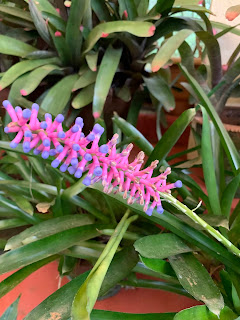From Kipling’s Meet the Tigers to Wordsworth’s Daffodils and More, we now come to the last part of the wonderful Bandipur- Coonoor- Ooty (Bandi-co-ot) travel where we meet some faces we never will forget.
Spreading Fragrance
In Ooty, the tourist booklets and guides will talk about many beautiful gardens and viewing points but rarely will they recommend a visit to the Toda Village. Toda’s a Dravidian ethnic group and is one of the three prominent tribal factions in the Nilgiris. We hired an auto whose driver, too, was not keen to take us to see what remained of the Toda village. Here we met a pretty looking girl and her grandmother Vasamalli who spoke in good fluent English. We saw a couple of thatched houses which appeared different from normal village homes as these were in the shape of half-barrels. We were told that these were the temples where we could go but had to leave our footwear behind. Since the distance was quite a bit and the land was full of mud and cattle dung, we decided not to venture beyond the pucca houses the government has constructed for the tribals. Vasamalli is the first woman graduate of the Toda community and is involved in their betterment through community work with the help of district administration. Vasamalli showed us the traditional embroidery of red and black over white cloth and we felt obliged to buy a small sling bag we knew we were over paying but did not hesitate to pay as it was for a good cause. The smile on her granddaughter’s face was the best acknowledgement we could have hoped for. Vasamalli was living up to her name which meant Jasmine and spreading fragrance.
Nikhil, our tourist cab driver at Coonoor, was a pleasant and talkative person who kept us engrossed in the little interesting stories about each place we visited. Our first stop was a tea garden called Singara which is spread over a huge mass of land. We were told that this tea garden is owned by none other than film actress Mumtaz and her husband, Mayur Madhvani. We stopped the car, went around walking and posing as Nikhil kept clicking pictures of us as neither of us was good at taking selfies. I was hoping that from the slopes of the green tea bushes would emerge Mumtaz in her typical style of a bright saffron saree tightly wrapped around her and singing, “Aaj kal tere mere pyar ke charche….” I am sure she was there somewhere but thanks to the famous Coonoor mist, I could not see her.
Coonoor is truly mystic and misty. One minute you can see the blue hills and the next it is gone. We were taken to a famous spot called Dolphin’s Nose from where we could possibly see the water falls and some more sights. A look at the two pictures below, taken at an interval of less than sixty seconds, will show you how the mist envelopes the place. No wonder exactly a week later, the CDS flying into Wellington from Sulur Airbase in a chopper crashed…while special investigation will find the real reason, my guess is, it would be the weather…gone in sixty seconds! Incidentally, this area, around Wellington, Coonoor and a little distance away Madekeri, is now, in some manner, the resting place of the three highest ranking Indian military generals….Field Marshall Sam Manekshaw, Field Marshall K.M.Cariappa and now General Bipin Rawat.
 |
| View from Dolphin's Nose at 11.23am |
 |
| View at 11.24am |
The Sweet Lady
Lady Canning’s Seat at Coonoor is supposed to be yet another beautiful
site for photography as it offers a panoramic view of the valleys and mountains
including the view of Lamb’s Rock. All this is possible on clear sky days of
the year and we were dogged throughout the visit with the white dense mist and
fog which made visibility almost impossible. It is said that the last Governor
General of East India Company and the first Viceroy of India, Lord Canning’s
wife, Charlotte Canning, who was an artist, made many a painting sitting on the
seat after the First War of Indian Independence in 1857. While I missed seeing
Lady Canning and her Seat but her name brought a smile to my face. As a Bong
there is a sweet that is reddish brown in colour, made of chenna and flour, soaked in sugar syrup and called Ledikeni. Legend says that the sweet was prepared by
Bhim Chandra Nag of Calcutta either in commemoration of her arrival in India in
1856 or to celebrate her birthday. The tale states that the sweet became Lady
Canning’s favourite and she would demand for it on every occasion. I looked at
my wife and Googled if any descendants of the sweet makers of those times were
still around at Coonoor where I could see and enjoy a Ledikeni but alas once more I was disappointed.
 |
| Bhim Chandra Nag's Ledikeni |
ZNMD
Pykara Lake must rank among the most beautiful lakes in the world with
green hills covered with pines as far as eyes could see and water so clear and
clean that you may just drink it up taking a scoop with your cupped hands.
There we met a couple who seemed arguing…
Why did you book for the speed
boat? You know my fear of the water and the speed at which these boats move,
not to mention the swerves and fast turns they take. You should have taken the
slow boat ride.
Arrey Baba, just don’t worry.
Enjoy the water beneath and the cool breeze that will brush your cheeks as we
enjoy the thrill. It’s been thirty two years together and you must trust me
that I will not put you into any trouble. Remember the movie Zindagi Na Milegi Dobara?
All those things are fine in
movies but not in real life. Anyway, if during the ride I feel scared at any
moment, you will ask the driver to turn back.
Done…chalo..
As the ride began, the woman loved the sight of the speed boat cutting through the calm waters, watching the beautiful breath taking sight of the lake, mountains and lush green view, made her forget the fear and enjoy the moment. She took her hand off the steering wheel and opened up her arms wide, closed her eyes and felt the magic of the moment. See how they smiled after the ride….
 |
| UsTwo@ThirtyTwo |
In 1819, a young Englishman named John Sullivan, under the orders of the East India Company, set out to investigate the ‘origins of the fabulous tales that are circulated concerning the Blue Mountains to verify their authenticity and to send a report to the authorities.’ After an expedition lasting six days, he finally hoisted the British flag on a plateau and reported that the place was ideal for having a resort for invalid soldiers. Rest is history as more and more English immigrants from the plains started arriving in search of health, comfort and leisure. Sullivan was made the Collector of Coimbatore and he introduced potato and barley to the region, was instrumental in creating the Rose Garden and between 1823-25 created Ooty Lake as a source of irrigation.
We stayed in a hotel called Sullivan Court, now a property of ITC, and
during one of our long walks went to St. Stephen’s Church where some of his
family members are buried. One evening
when we were about to go out to see the tea factory, we saw some formally
dressed people at the hotel lobby with a couple of photographers. When we
returned we saw there was a lot of buzz around and at dinner time saw a large
gathering of youngsters around a table discussing what appeared to be a
planning for a film shoot. We asked the hotel manager if any actors had also come
for the shoot and we were told that Vidya Balan had arrived. The two of us
would wait the next two nights in the lobby for an extra thirty minutes just in
case she would show up but alas the tigers in Bandipur were more sporting than
Bidda Bagchi aka Balan at Sullivan Court.
SS




























